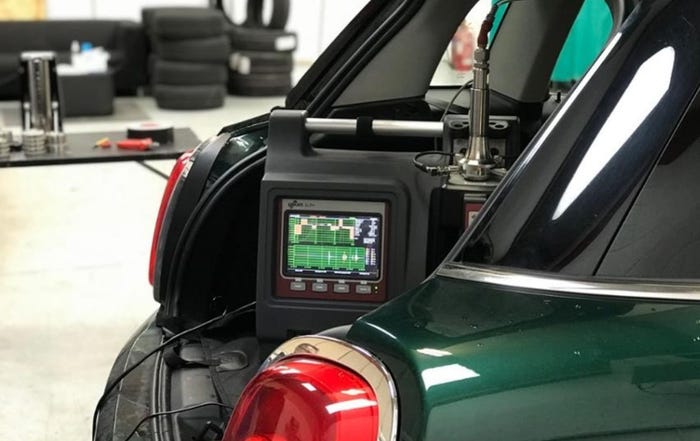Flex Time
LANSING, MI General Motors Corp.'s Lordstown, OH, and Orion Township, MI, assembly facilities will be the next to be retooled with a manufacturing technology new to GM that saves money and factory floor space while increasing production flexibility. GM has been using the programmable body shop tooling, called C-Flex, at its plants in Moraine, OH, and Oklahoma City. GM's Lansing Grand River plant here
February 1, 2003

LANSING, MI — General Motors Corp.'s Lordstown, OH, and Orion Township, MI, assembly facilities will be the next to be retooled with a manufacturing technology new to GM that saves money and factory floor space while increasing production flexibility.
GM has been using the programmable body shop tooling, called C-Flex, at its plants in Moraine, OH, and Oklahoma City.
GM's Lansing Grand River plant here is the auto maker's first facility to have C-Flex designed into the factory layout. LGR makes the Cadillac CTS and officially began non-saleable production of the Cadillac SRX cross/utility vehicle on Dec. 16.
“I've done a lot of model changeovers,” says LGR Plant Manager Ken Knight. “And I've never seen one go as slick as this.”
Flawless launches are imperative for Lordstown and Orion, which are participating in important programs for GM: the Delta small car architecture and Epsilon midsize platform, respectively.
C-Flex replaces body-style specific tooling, allowing multiple body panels to be welded with the same set of programmable tools and robots. “The benefits of C-Flex are that plants can build a higher variety of differentiated products at much lower costs,” says Gary Cowger, president-GM North America.
C-Flex reduces the size of body shops between 50,000 sq.-ft. (4,645-sq.-m) and 150,000 sq.-ft. (13,935 sq.-m) by eliminating the number of welding cells needed.
It costs about $100 million to implement C-Flex into an assembly plant. Another $30 million to $50 million is needed when a new product is introduced to the plant to cover the cost of new software, additional C-Flex units and some dedicated subassembly operations.
For a plant that isn't equipped with C-Flex, it costs $150 million every time a new vehicle is introduced.
“We intend to roll this system out on every new platform,” says Eric Stevens, GM executive director-manufacturing engineering.
Within the limitations of the paint shop, GM says C-Flex can handle four or five different platforms per plant.
Many foreign auto makers have had this degree of flexibility for years. GM says C-Flex will put it on par with its competitors. “We believe we are very much equally flexible to build multiple models on the same line,” Stevens says.
In addition to space and money savings, C-Flex decreases changeover time and allows GM to increase production of hot-selling models faster. It also means GM isn't stuck with a large tooling investment for a product that isn't selling well.
“CTS and SRX are on the same set of tooling,” Cowger tells the media during a tour of LGR. “We're limited by the plant's volume, not by the models. It's a paradigm shift. With single tooling you were restricted by both — what the body shop tooling fits and how much it can produce. The body shop, which always used to be the inhibitor, is not now.”
Another key to GM's increasing flexibility is that GM's designers and engineers have been given mandates to develop different products with common pickup holes and location coordinates for plant robots.
About the Author
You May Also Like



